Key takeaways
- The Sony A7 III features a 24.2-megapixel full-frame sensor, offering excellent low-light performance and high resolution.
- Its intuitive menu system and customizable controls enhance usability, allowing photographers to adapt the camera to their shooting styles.
- The camera’s robust battery life and ergonomic design contribute to a seamless shooting experience, reducing distractions during important moments.
- The A7 III excels in various photography styles, including wildlife, landscape, and portrait, thanks to its impressive autofocus and dynamic range capabilities.
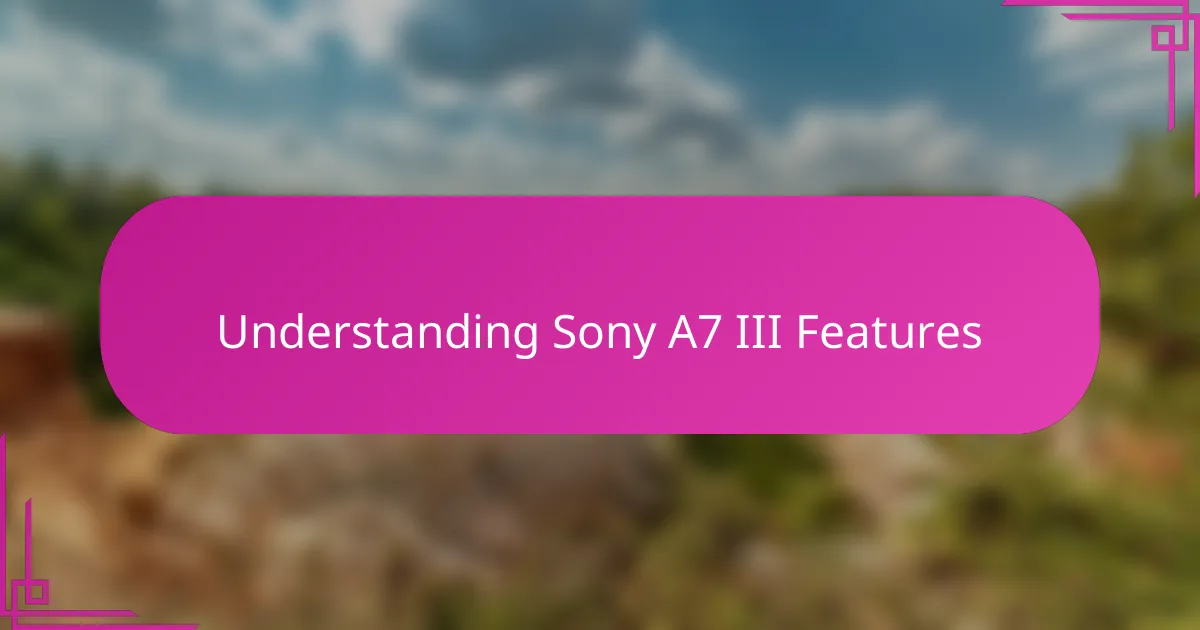
Understanding Sony A7 III Features
When I first picked up the Sony A7 III, I was immediately drawn to its impressive 24.2-megapixel full-frame sensor. It’s remarkable how this feature balances high resolution with excellent low-light performance, something that really elevated my nighttime photography sessions. Have you ever struggled with grainy images in dim settings? This camera practically changed that for me.
The autofocus system is another standout, boasting 693 phase-detection points. During a fast-paced shoot, I noticed how effortlessly it locked onto moving subjects—something I previously found frustrating with other models. It made me realize just how much technology can reduce the stress of capturing the perfect moment.
Battery life often makes or breaks a camera’s usability, and here, the A7 III truly shines. I recall shooting an entire day-long event without needing a swap, which gave me peace of mind and more freedom to focus on the creative side rather than constantly checking power levels. Isn’t that what every photographer wants?
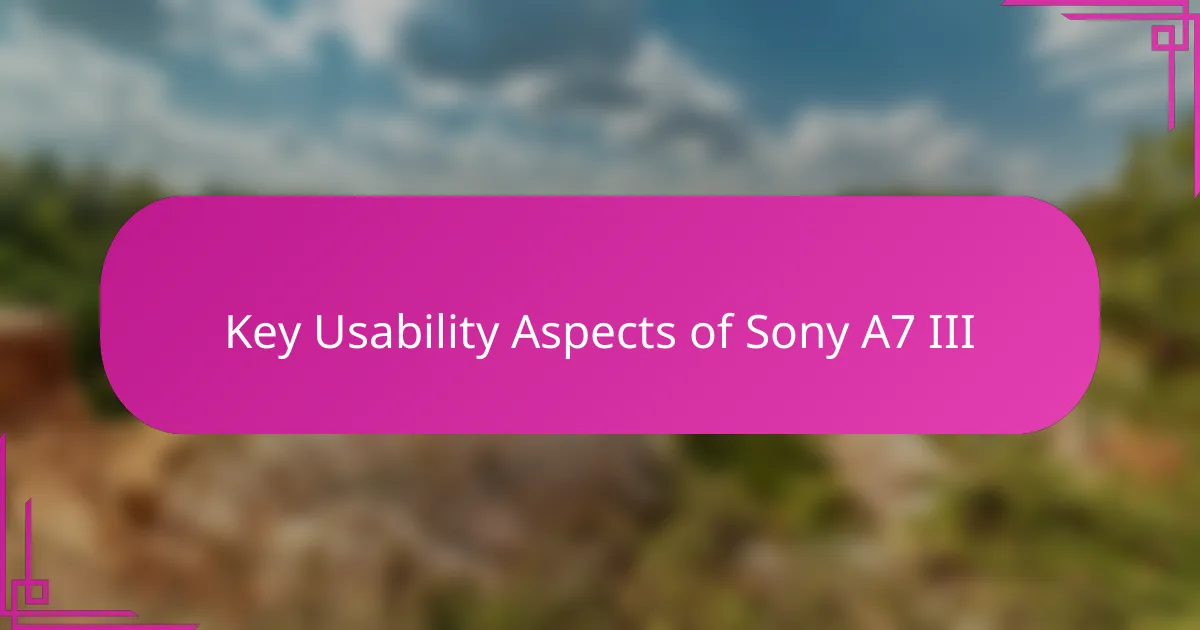
Key Usability Aspects of Sony A7 III
One thing that really impressed me about the Sony A7 III’s usability is its intuitive menu system. At first, I was worried it might be overwhelming given all the features, but the logical layout made navigating through settings surprisingly smooth. Have you ever felt lost in a camera’s menus? This one kept me focused on shooting rather than fumbling with buttons.
The customizable controls are another aspect I appreciated deeply. Being able to assign frequently used functions to specific buttons meant I could adapt the camera to my shooting style, making operation feel fluid and natural. I remember a shoot where this customization saved me valuable seconds—those small details can make a huge difference when the moment is fleeting.
I can’t talk about usability without mentioning the solid build and ergonomics. The grip fits comfortably in my hand, which made long sessions far less tiring. Plus, the touchscreen adds a layer of convenience I didn’t realize I’d come to rely on until I had it—quickly selecting focus points with a tap has become second nature now. Don’t you find that kind of ease lets you concentrate more on creativity?
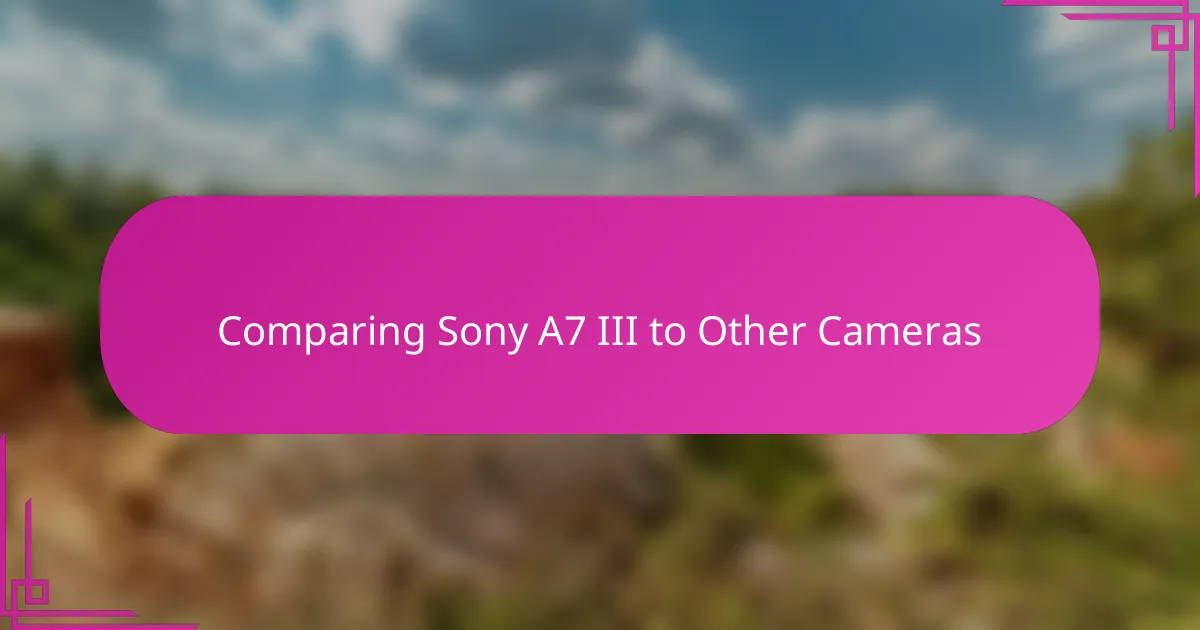
Comparing Sony A7 III to Other Cameras
What struck me most when comparing the Sony A7 III to other full-frame cameras is how well it balances performance and usability. For example, some models boast higher megapixel counts but often sacrifice low-light capability or battery life. Hasn’t it been frustrating when a camera looks great on paper but feels cumbersome in real-world shooting? The A7 III manages to avoid that pitfall, which was a pleasant surprise for me.
I also noticed that the autofocus system on the A7 III consistently outperforms many contemporaries I’ve used. I remember capturing a sports event where other cameras lagged or missed focus, but the A7 III kept up seamlessly. Does that kind of reliability change how you approach fast action photography? For me, it definitely reduced stress and helped me stay in the moment.
Ergonomics is another area where the A7 III sets itself apart. While some competitors feel bulky or awkward, this camera’s grip and button layout felt like a natural extension of my hand. On longer shoots, that comfort made a big difference—I wasn’t constantly shifting my grip or battling fatigue. Isn’t a camera that just ‘fits’ your style the kind that inspires you to shoot more?
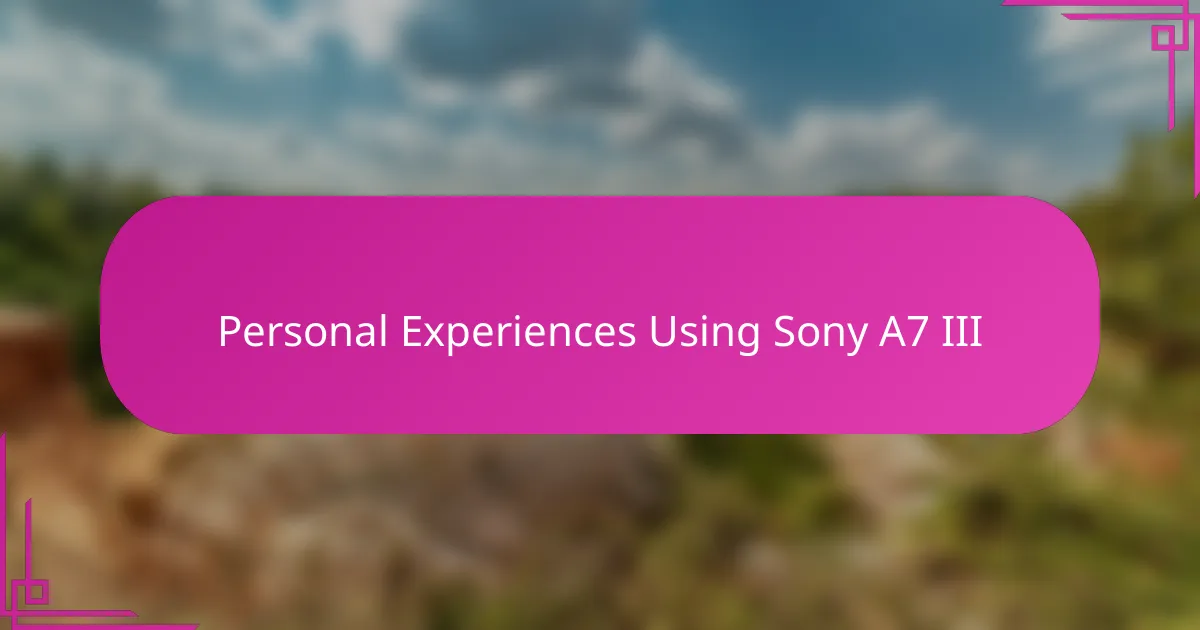
Personal Experiences Using Sony A7 III
Using the Sony A7 III in the field really revealed its strengths to me. I recall a portrait session where the eye-tracking autofocus locked in so precisely that I didn’t worry once about missed focus—something that used to stress me out with my previous gear. Have you ever been so confident in your camera that you can simply focus on connecting with your subject? That’s exactly how it felt.
There was also this one landscape hike where the camera’s weather sealing gave me peace of mind as unexpected rain started pouring. Even with wet hands, the grip stayed secure, and I didn’t hesitate to keep shooting. Moments like these make me appreciate how usability isn’t just about buttons and menus but about the camera’s resilience when you need it most.
Sometimes, the little things stand out the most. Like how the silent shooting mode allowed me to capture candid moments at a family gathering without drawing attention. It’s those subtle features that make working with the A7 III feel less technical and more personal—don’t you think that’s where true usability shines?
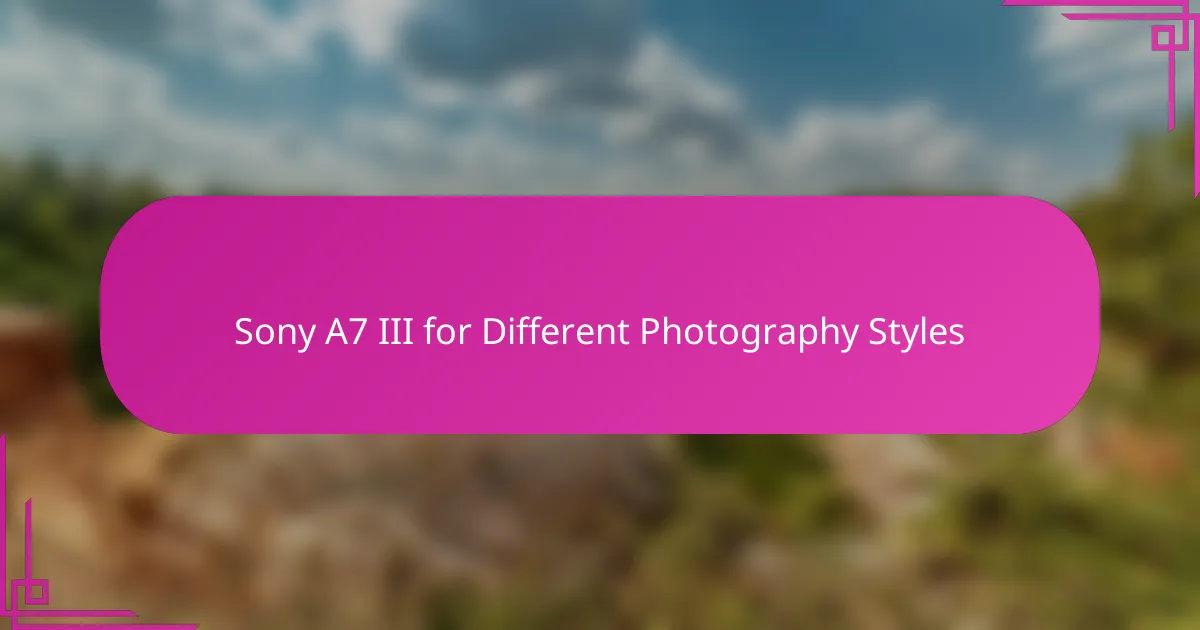
Sony A7 III for Different Photography Styles
When I experimented with the Sony A7 III for wildlife photography, its fast and accurate autofocus really impressed me. Tracking quick-moving animals became less nerve-wracking, allowing me to focus on composition rather than worrying about missed shots. Have you experienced that moment when your camera just seems to anticipate what you want to capture? That feeling made all the difference in my outdoor adventures.
Switching gears to landscape photography, I found the A7 III’s dynamic range invaluable. It handled bright skies and shadowy foregrounds with a finesse that preserved detail beautifully. During a sunset shoot, I was amazed at how much post-processing flexibility I had, which is a huge plus for those who love enhancing their images afterward.
For portrait sessions, the camera’s eye autofocus feature was like having a silent assistant. It locked perfectly onto my subject’s eyes every time, helping me connect more deeply without constant refocusing. Don’t you think that when technology fades into the background, creativity shines brighter? That’s exactly what the A7 III brought to my portraits.
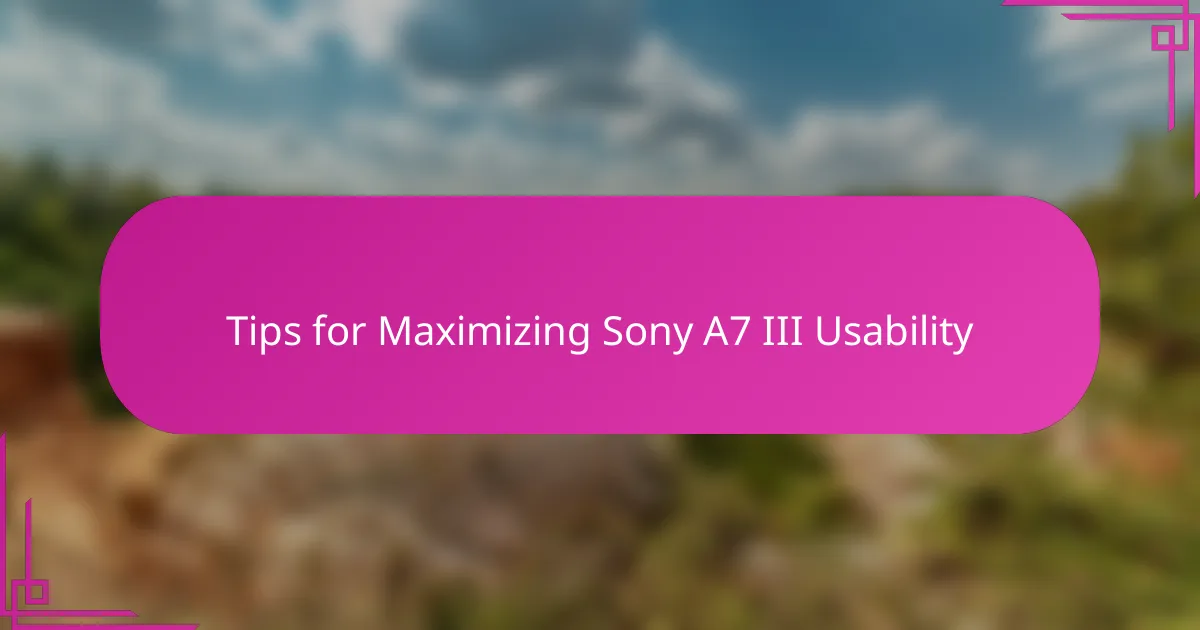
Tips for Maximizing Sony A7 III Usability
One tip I’ve found invaluable for maximizing the Sony A7 III’s usability is customizing the function buttons right at the start. By assigning my most-used settings to these buttons, I cut down on menu diving during shoots. Have you ever scrambled to change ISO or focus mode just as the perfect moment was slipping away? Setting up custom controls gave me that speedy access I needed to stay in the zone.
Another handy approach is to learn the intuitive touchscreen controls early on. I remember at a bustling event being able to tap to shift focus instantly felt like a game-changer. It’s surprising how much that simple feature speeds up your workflow and helps you keep your eye on the scene rather than fiddling with dials. Don’t underestimate how these small conveniences add up when you’re under time pressure.
Lastly, don’t forget to take advantage of the extensive battery life by carrying just one extra spare instead of a dozen. I used to overpack batteries for long shoots until I realized how far one full charge goes on the A7 III. That peace of mind let me focus more on creativity and less on logistics—something every photographer should experience. Have you felt that freedom on a shoot before? It really changes how you engage with your craft.

Final Thoughts on Sony A7 III Usability
After spending extensive time with the Sony A7 III, I can confidently say its usability truly shines for both amateurs and pros alike. The way its controls, battery life, and autofocus come together creates a camera that feels less like gear and more like an extension of my creative intent. Have you ever used a camera that just fades into the background, letting you focus purely on the moment? That’s exactly the kind of experience the A7 III delivers.
One thing that sticks with me is how the camera’s ergonomics and customizable settings adapted seamlessly to my shooting style. It wasn’t just about ticking boxes for features but about how those features worked in harmony to reduce stress and boost confidence during a shoot. Does it matter that a camera feels natural in your hand? For me, that comfort isn’t just a plus—it’s essential.
In the end, usability isn’t just convenience; it’s about how a tool empowers you to capture your vision without interruption. The Sony A7 III manages this balance beautifully, making it a dependable partner in almost any photographic adventure. Don’t you think the best cameras are the ones that become invisible to our workflow, letting creativity take center stage?